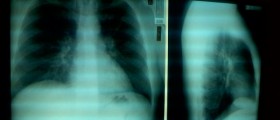
Wilson’s disease is a genetic disorder in which the copper accumulates in the tissues of the affected person. Copper is normally necessary for the growth, development, and maintenance of bone, connective tissue, brain, heart, and other body organs. However, if it accumulates in excessive amounts it causes different neurological or psychiatric symptoms, and even a liver disease. The disease tends to run in the families and occurs in 1 to 4 per 100,000 people. It has an autosomal recessive pattern of inheritance. It is caused by mutations in the Wilson disease protein (ATP7B) gene, which is present in 1 in 100 people. These people are carriers and a child may develop the disease only if it inherits the gene from both parents.
Signs and symptoms of Wilson’s disease
The first symptoms of Wilson’s disease normally appear somewhere between the ages of 6 and 20. However, in a small portion of patients, the disease may occur even later in life. The copper usually accumulates in the liver and inside of the brain, which makes the liver and neuropsychiatric symptoms two main features of this disease. Liver disease symptoms include fatigue, confusion, and enlargement of the spleen, but many other symptoms may also be present. Patients will also have neurological or psychiatric problems, cognitive deterioration, and changes in behavior, lack of balance, hand tremor, masked facial expressions, slurred speech, etc. Sometimes, the dark brown rings that appear to encircle the iris of the eye can also be present.
Prevention of Wilson’s disease
Wilson’s disease is a genetic disorder. This means that people with a family history of Wilson’s disease should always do the genetic counseling as a part of pregnancy planning. Genetic counseling is the only way to estimate the personal genetic risk information and translate it into the practical information for families. Genetic counseling will basically help families to understand information about genetic disorders and explain the patterns of inheritance. Therefore, people will get a better insight in what to expect from the future.
Genetic testing will complete the mutation analysis of the ATP7B gene, and other mutations linked to this disease. There are 300 recognized mutations of the ATP7B gene, but only a small number of mutations cause a Wilson’s disease. Both of the parents of an individual must carry an affected gene. If the mutation is confirmed the family members will get family counseling needed for making decisions, they are comfortable with, in respect of their personal ethical and religious standards.

















Your thoughts on this
Loading...